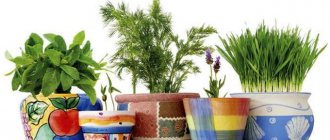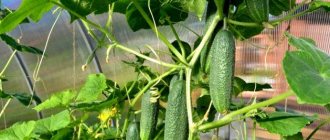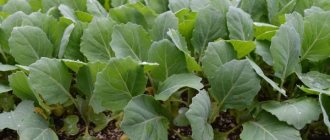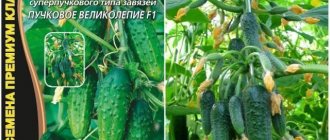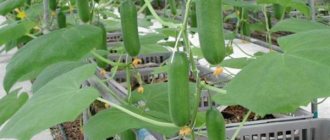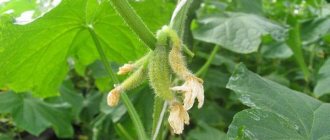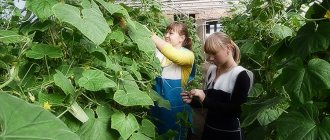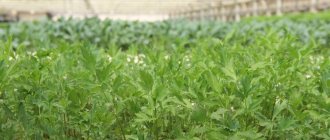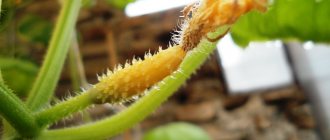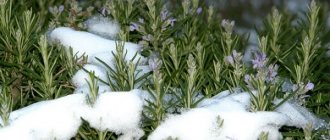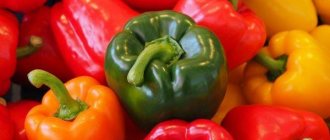In order to get a decent harvest of cucumber crops in a temperate climate with unpredictable weather changes, it is better to grow cucumbers in greenhouses or greenhouses. From the variety of seeds, it is quite difficult to choose those that are suitable for certain weather conditions. If the gardener is experienced, then it will not be difficult for him to select seed material for his plot, but for beginners this will be quite difficult. This article provides the best varieties of cucumbers for greenhouses, as well as a description of their advantages and disadvantages, which will greatly facilitate the choice for those who have just started their gardening activities.
Features of choosing varieties for the greenhouse
Breeders have now created many varieties and hybrids of cucumbers intended for cultivation in greenhouse conditions. The main requirement for such varieties is the following: there is no need for pollination, since it is quite difficult to attract flying pollinating insects to the greenhouse.
Therefore, you should choose parthenocarpic or self-pollinating varieties of cucumbers for planting. Vegetable growers often confuse these two types of cucumber crops, believing that they are absolutely the same. However, there are serious differences between them:
- on parthenocarpic crops, only female buds bloom (in about 90% of cases), which do not require pollination in order to form ovaries. But such cucumbers will not contain seeds, but only their rudiments;
- Flowers of self-pollinating varieties contain both pistil and stamens, so such flowers are self-pollinated. But many vegetable growers shake the flowers or brush them with a soft brush for better pollination.
You should also have a good idea of how the harvested cucumbers will be used, since all varieties of these greenhouse vegetables are divided into:
- for those intended for consumption only fresh or in salads;
- for salting or pickling;
- universal (suitable for different purposes).
There are also types of cucumbers that can be grown in greenhouse conditions throughout the year; most often, the harvested crop in this case is used only fresh.
The best varieties for greenhouses
When choosing seed material for planting in a greenhouse, vegetable growers should know that for planting at different times of the year they should buy certain varieties, know what qualities they have and what care they require. Therefore, below we will talk in more detail about the most popular varieties for greenhouse beds.
For growing in autumn and winter
Variety Podmoskovnye Vechery F1
To successfully grow cucumbers in the autumn-winter period and get good yields, you should choose ones that are not demanding on the level of lighting, are resistant to low air temperatures, do not require pollination and produce high yields. Experts recommend purchasing parthenocarpic hybrids, which are distinguished by their unpretentiousness and early maturity. But mainly female flowers appear on the vines of such vegetable crops, so pollinator plants should be planted nearby (one pollinator per 9 parthenocarpic plants), otherwise the yield of cucumbers will be too small.
Hybrids that are highly undemanding in terms of lighting:
- Arina F1;
- Classic F1;
- Master F1;
- Moscow evenings F1;
- October F1;
- Danila F1;
- Profi F
Hybrids with a long fruiting period and high resistance to cold:
- Virenta F1;
- Lord F1;
- Saltan F1;
- Anyuta F1;
- Boy with Thumb F1;
- Maryina Roshcha F1;
- Chistye Prudy F1;
- Farmer F
High-yielding with good formation of lateral shoots:
- Okhotny Ryad F1;
- Buyan F1;
- Anyuta F1;
- Ant F1;
- True friends F1;
- Junior Lieutenant F1;
- Three F1 tankers.
For planting in spring and summer
Variety Courage Varieties
and hybrids that can be grown in greenhouse conditions during the warm season are characterized by unpretentiousness to growing conditions and care, excellent taste, high yield, resistance to changes in temperature during growth and fruiting, but do not feel very good in the shadow. The most popular varieties are:
- Courage is an early-ripening variety with high yield (up to 17-29 kg per sq. m), the vines are vigorous, well-branched. Proper formation of the bush and removal of excess stepsons is required.
- Fan is a parthenocarpic variety, the fruits are used only fresh, an early ripening variety with little branching.
- Avoska is a parthenocarpic variety of indeterminate type; the side shoots grow quite well, so it is necessary to form lashes. The yield of the variety is average - up to 12-14 kg per 1 sq. m.
- Zozulya F1 is a hybrid of the parthenocarpic type, the weight of ripe fruits is up to 200 g.
- April F1 is a high-yielding variety, ripe fruits have excellent taste, the weight of ripe fruits is about 250 g.
Self-pollinating
Variety Voyage F1
Of all the self-pollinating varieties and hybrids of these vegetables, the most popular are the following varieties:
- Cupid F1;
- Voyage F1;
- Ginga F1;
- Zyatek F1;
- Orpheus F1;
- Cheetah F1.
Without bitterness
Variety Garland F1
Many vegetable growers have encountered the fact that with a lack of watering, ripe cucumber fruits begin to taste bitter, so their taste becomes worse. However, breeders develop hybrids of these vegetables that, even in the absence of regular watering, do not acquire the characteristic bitterness. The most popular varieties of cucumbers without bitterness, grown in greenhouse conditions, include:
- Gerasim F1 is an early ripening variety with medium-branched vines and gherkin-type fruits;
- Garland F1 is a weakly branched, early-ripening variety that grows well even in the shade, recommended for growing in greenhouses, on balconies or window sills;
- Duke F1 is a vigorous, medium-early plant that tolerates drought well, while the fruits do not lose their excellent taste;
- Fidget F1 is a universal variety, strong growing, weakly branching. A high-yielding hybrid, the fruits have good taste. The hybrid is resistant to most diseases that affect other varieties of this vegetable crop.
The best cucumbers for planting in a greenhouse: video
Quadrille F1
"Quadrille" is one of the best hybrids in terms of germination, number of ovaries and fruits. On the main shoot of the bush, 7-10 bouquets of ovaries are formed. The seeds are first planted to produce seedlings, and then they are transferred to greenhouses. Transfer time is April-early May.
Cucumbers withstand unfavorable conditions and cold, continuing to bear fruit. The first harvest is harvested after 45-59 days. The plant is not afraid of diseases; it is extremely rarely affected by downy mildew and root rot.
Gherkins should be harvested as they ripen. Having filled and grown to the desired size, they fall off. If they turn yellow, it means they lack organic fertilizers.
Related article:
How to increase the yield of cucumbers: 10 useful tips
This crop is easy to work with: the bushes grow to medium size, the leaves are small, but you need to protect them from direct sunlight.
Gardeners have a choice - collect the fruits small or wait until they fill with juice and increase in size. In both cases, the pulp will be elastic, without voids. The seeds are so small that you cannot feel them while chewing.
The average length at full maturity is 11-12 cm, weight is no more than 100 g. Up to 8 kg of vegetables are obtained from each bush per season.
Interesting to know: How to grow cucumbers at home
Top 10 most popular productive universal varieties
There is not always room in the garden to build a large greenhouse with enough space for cucumbers of different types of use. Therefore, most vegetable growers prefer to plant this vegetable crop with universal fruit characteristics indoors. Top 10 best all-purpose cucumber varieties:
Suomi F1
A parthenocarpic hybrid with super-early ripening of greens (37-39 days pass from the moment of sprouting to harvest), the fruits are gherkin-type, up to 5-7 cm in size with excellent taste, do not outgrow even when they are not collected on time. The fruits are not bitter and do not turn yellow when overgrown.
Valaam F1
Ultra-early variety for universal use, recommended for cultivation in northern regions, high-yielding.
Orpheus F1
A high-yielding, early-ripening, self-pollinating variety, recommended for cultivation in the Moscow region and in regions with similar climatic conditions. Ripe greens are about 11-12 cm long, the flesh is juicy and crisp, without bitterness.
Cupid F1
Parthenocarpic super-early variety with a growing season of about 1.5 months. Ripe greens are dark emerald in color, with small tubercles and numerous thorns. The taste is excellent.
Blik F1
A medium-sized parthenocarpic hybrid with a ripening period of up to 2 months. The variety is high-yielding, the fruits ripen together.
Emerald F1
An early-ripening parthenocarpic vegetable plant with well-developed vines, medium branching. The fruits are large, up to 15 cm long, with good taste, universal purpose.
Glafira F1
Shade-tolerant parthenocarpic variety, growing season – up to 1.5 months. It is imperative to cut off the lower nodes up to 6 from the lashes for better growth and fruiting of the lashes. The main stem is pinched at a height of about 1.0 m, and the side shoots - at the level of 3-4 leaves. Large ripe greens have a pleasant taste; they can be used for preservation, as well as used fresh.
Romance F1
Parthenocarpic type with a long fruiting period. After the main shoots finish bearing fruit, ovaries begin to appear on the side stems of the canes. Ripe greens have an excellent presentation and pleasant taste, the length of ripe fruits is up to 11-13 cm.
Alex F1
Brought out by breeders from the Netherlands, zoned for cultivation in greenhouse conditions in most regions of Russia. The growing season is up to 1.5 months, the plant is strong, with a strong root system, and high-yielding. Alex F1 is resistant to most diseases and tolerates short periods of drought. Ripe cucumbers are green in color, with small tubercles, about 9-11 cm long. The taste is excellent. The variety is recommended for cultivation for sale due to its good presentation and excellent taste of ripe fruits.
Cheetah F1
This hybrid of the parthenocarpic type is characterized by friendly and abundant ripening of fruits. Cheetah is an early ripening variety (no more than 40 days pass from the moment of germination to harvest). The lashes practically do not form side shoots, so the bushes are quite compact. The hybrid is highly resistant to major diseases and unfavorable climatic conditions. Ripe cucumbers are medium in size (about 10-11 cm), covered with small tubercles with small white spines. Perfect for canning and fresh consumption due to its excellent taste.
The best varieties of cucumbers for growing visually: video
Adam F1
The seeds of the Dutch self-pollinating hybrid “Adam” are deservedly considered the best: they germinate quickly and set ovaries early. Gardeners harvest the first harvest from greenhouses after 1.5 months.
Related article:
Long Chinese cucumbers
The second advantage is long-term fruiting. Cucumbers are a rich dark green color, sometimes with faint light stripes. Finely tuberculate, medium size - up to 10 cm and 3-4 cm in diameter. One weighs 80-90 g. They have a sweetish taste.
Harvested vegetables can be stored for no more than two weeks in a cool, dry place. The plant is immune to powdery mildew, olive spot and cucumber mosaic.
It is recommended to grow the subspecies “Adam” in greenhouse conditions in a vertical manner, promptly tying the bushes to the trellises.
If the bushes are correctly formed, they do not shade each other, are well ventilated and develop. To increase the fruiting period, shoots are regularly pinched.
The best varieties of cucumbers by region
Almost all hybrids of this vegetable crop can be grown in heated greenhouses, even in regions of Russia with unfavorable climatic conditions. However, experts recommend certain hybrids for cultivation in each region of the country.
For the Moscow region, middle zone
Variety Kuzya
In the conditions of the middle zone, where spring frosts often continue until the end of spring, and there may be unexpected cold snaps in the fall, those varieties of cucumbers that are resistant to cold snaps, are not demanding on lighting, are highly resistant to diseases, and have high yields should be grown in greenhouses. These varieties include:
- Babayka is a variety that even a novice vegetable grower can grow and get a harvest from. Babayka is resistant to most diseases, tolerates cold weather well, and does not require the formation of bushes or the presence of pollinating insects. Ripe fruits - gherkins, have a good presentation and excellent taste, are universal. The average yield is about 9-11 kg per 1 m2.
- Connie is an early ripening variety that can be grown in greenhouses twice per season. The vines are tall, the side shoots grow weakly. Zelentsy have a good presentation and unsurpassed taste.
- Kuzya is a hybrid characterized by uniform ripening of fruits and extended fruiting over time. Ripe fruits are gherkin type with good taste. The variety is universal.
For the Urals
Arina F1
For growing cucumbers in greenhouse conditions in the Urals, experts recommend the following varieties:
- Arina F1 is a hybrid that is resistant to most diseases and can tolerate sudden fluctuations in air temperature. The collected fruits have excellent taste and are used only fresh.
- Voyage F1 is an early ripening hybrid with a growing season of up to 1.5 months, does not require pollination, ripe fruits are used fresh.
- Moscow Evenings F1 is an early ripening hybrid that tolerates shade well and can be grown not only in greenhouses, but also in open ground.
For Siberia
Variety Ant
For growing indoors in Siberian conditions, experts recommend the following varieties of cucumbers:
- Spring;
- Hermann;
- Claudia;
- Ant;
- Crispina.
For the Leningrad region
Variety Emelya
In the Leningrad region, it is recommended to grow the following hybrids in greenhouses:
- Erika:
- Yuventa;
- Our Dasha;
- Emelya;
- Zozulya;
- Chaikovsky.
The best varieties of cucumbers according to reviews for 2021
Variety General
According to reviews from vegetable growers, the following are recognized as the best varieties and hybrids of cucumbers in 2021:
- Berendey;
- Siberian garland;
- Emerald City;
- Courage;
- Little finger;
- Goosebumps;
- Spino;
- General's;
- Horses;
- Male.
Thanks to the efforts of breeders, a large number of varieties and hybrids of cucumbers have now been developed that can be grown in greenhouses and greenhouses not only in the warm season, but also in the autumn-winter period. And it should be noted that cucumbers grown in winter do not lose their excellent commercial taste, are high-yielding, are not susceptible to most diseases, and are also quite unpretentious.
Therefore, many vegetable growers, especially those living in regions with rather harsh climatic conditions, prefer to grow cucumbers in greenhouses in order to obtain large yields of this vegetable crop and not depend on the vagaries of nature.
Exotica, or how to surprise your neighbors
But if you want to experiment, you can grow white cucumbers in your own greenhouse. These are unusual hybrids that are gradually gaining popularity. One of them is the “Bride F1” variety, the fruits of which are tender, aromatic, and behave well in preservation.
Many beginners in this business are also interested in “Chinese” fruits. Note that in a greenhouse they do not always grow evenly, the presentation is almost completely absent, but the taste will definitely please you. The best variety is “Beijing”, which produces tender juicy fruits with small seeds. This variety bears fruit until frost even in an unheated structure.
In any case, when choosing, give preference to varieties that are intended specifically for your region. These are more designed for specific weather conditions, are resistant to local diseases and bear fruit on time.
